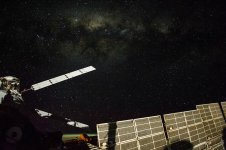Thinking about getting a scope, what sort of images would one see through a scope like that?
Faint smudges as galaxies, rings around saturn, great red spot of jupiter, resolve globular clusters really well etc
Take it to a dark site and use some filters to get good views of nebulas.
I have a 10" Orion Optics on an NEQ6 and it blows my mind every time I use it.
The skywatcher is a great scope by the way and will last a long time.





